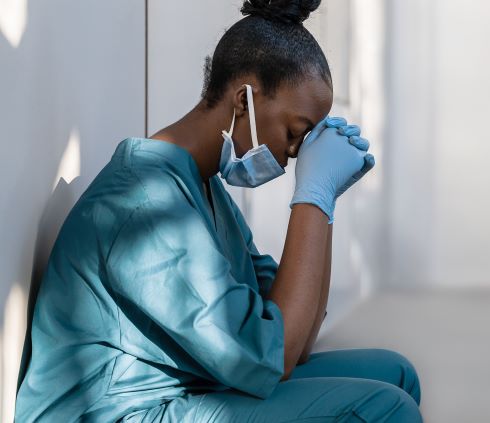
DocWire News recently covered a study published in JAMA Network Open, “Women Surgeons’ Experiences of Interprofessional Workplace Conflict.” The study has garnered attention on social media. Women have continued sharing their experiences at work using the hashtag #WhyIWasWrittenUp.
DocWire spoke with lead study author Lesly A. Dossett, MD, MPH, of the Center for Health Outcomes and Policy, University of Michigan Institute for Health Policy and Innovation, Ann Arbor, about the paper.
What prompted you to undertake this study?
Dr. Dossett: We have had an interest for a long time in equity and achievement in surgery, and general academic surgery in particular. One of the things that we heard a lot about as we worked on these issues was the experience that women surgeons had in interacting with interprofessional staff. So while their male physician colleagues were making progress in understanding implicit bias, there is still a gap there in the interprofessional workplace environment.
What are some of the key takeaways from the study?
Dr. Dossett: One is just the stories. Some of those stories come out through the paper. But there’s a whole social media Twitter hashtag, #WhyIWasWrittenUp, where a lot of women surgeons and physicians had shared similar experiences. I think those stories are not surprising, but troubling at the same time—just to see the stories behind those and recognize that these are real people and people’s careers. One of the things that we wanted to illustrate through the work was the impact of these conflicts and how they’re handled.
The other thing is this concept of unwritten rules and double standards. Those are things we heard a lot. I think both of those things, the double standards and the unwritten rules, come because of this concept of the expectation, usually from other women, that women conform to gender norms—that those expectations often supersede conforming to professional norms. For example, if a woman surgeon is assertive or directive in, for example, running a cardiac arrest code or a trauma resuscitation—which are totally acceptable in the professional sense of the word to be directive and assertive—that can come off differently because it conflicts with what most people think about the gender norm. So, educating folks about those discrepancies [is important]. Also, making sure that women surgeons are not being held to a different standard than their male colleagues.
Were you surprised by any of the study’s findings?
Dr. Dossett: What comes as a surprise is the ubiquitousness of it. You have women surgeons who have these stories that are extremely successful—some women have succeeded in spite of them, but almost everybody has a story like that, where there was this either conflict, or the other side of the coin is having to be friends, having to bring brownies, having to kind of build that social capital. I think that’s one surprise, is just how common it is.
What roles do men and women play in adjusting interprofessional conflict in the workplace?
Dr. Dossett: One of the biggest things is that we have to take interprofessional conflict and separate that from the patient safety reporting systems. A common theme that we saw was that the systems that were put in place to prevent patient safety events are not equitably used. They’re primarily used by non-physician staff, in terms of the reports that are filed. It’s way more common for nurses, and other interprofessional staff to file those complaints. Using those types of systems to adjudicate, communicate our styles or personality differences, is not what they were designed for. Our data suggests it’s not effective and probably not fair or equitable.
Number one is a call to action for hospitals and hospital leaders. Number two is to more broadly disseminate culture and equity training. In academic medicine and surgery, there’s been a big effort over the last five or so years to train physician staff in implicit bias, and to raise these issues. I’m not sure how much that training has been disseminated across the healthcare workforce. Third, in terms of what can men do? It remains the case that most of the faculty, especially senior faculty training women, surgeons are men and white men. So making sure to model professional communication, and professional behavior, and recognize that they could be modeling behaviors that they may get away with but that their trainees will not.
Do you believe the study has any implications for recruiting women into surgery?
Dr. Dossett: I think women are coming to surgery. Many of the surgical specialties are making significant gains in gender equity. So I think we’ll continue to recruit women to the field. I think the challenge is retention and advancement. These conflicts can play major roles in both of those things. Obviously with retention, if conflict creates a hostile work environment then people are going to be motivated to change jobs.
As far as achievement and advancement, there’s good evidence that women are asked to do things that their male colleagues are not. Even if that’s 10% different, if I’m asked by the nursing staff or other interprofessional work staff to do 10% more work than my male colleagues, then that’s 10% of time that can’t be dedicated to other things that can lead to achievement and promotion. For example, in the academic setting, writing papers, submitting grants, etc. So I think we’re on our way and we’ve demonstrated we can recruit women to the field. What we have to now make sure of is that we make the environment equitable so that those women are retained and promoted.
What limitations did the study have?
Dr. Dossett: It’s a qualitative study designed to describe sort of the universe of experiences. The study is not designed to document how frequent these conflicts are, so that’s one limitation. Another limitation is that the women who participated in the study were relatively junior. Some of that reflects the overall body of women’s surgeons. The majority of women surgeons are younger because we’re newer to the field. But it’s hard to know how much of these conflicts may be experienced by younger male surgeons, which is part of our future work. Finally, we only elicited the perspective of women surgeons; we haven’t yet elicited perspectives of other team members, and how they may perceive some of these issues.
What future plans do you have to research this area?
Dr. Dossett: We have a fairly broad portfolio of projects looking into achievement and advancement of women surgeons. We have implemented what we call a cultural complications curriculum, which addresses or brings to discussion areas such as implicit bias, microaggressions, stereotype threat, many of the sociology phenomena that underlie these conflicts. More broadly, we are trying to understand conflicts from other perspectives, then understand how we can implement preventative measures. So interprofessional team building, and more equitable adjudication processes when they do occur.







 © 2025 Mashup Media, LLC, a Formedics Property. All Rights Reserved.
© 2025 Mashup Media, LLC, a Formedics Property. All Rights Reserved.